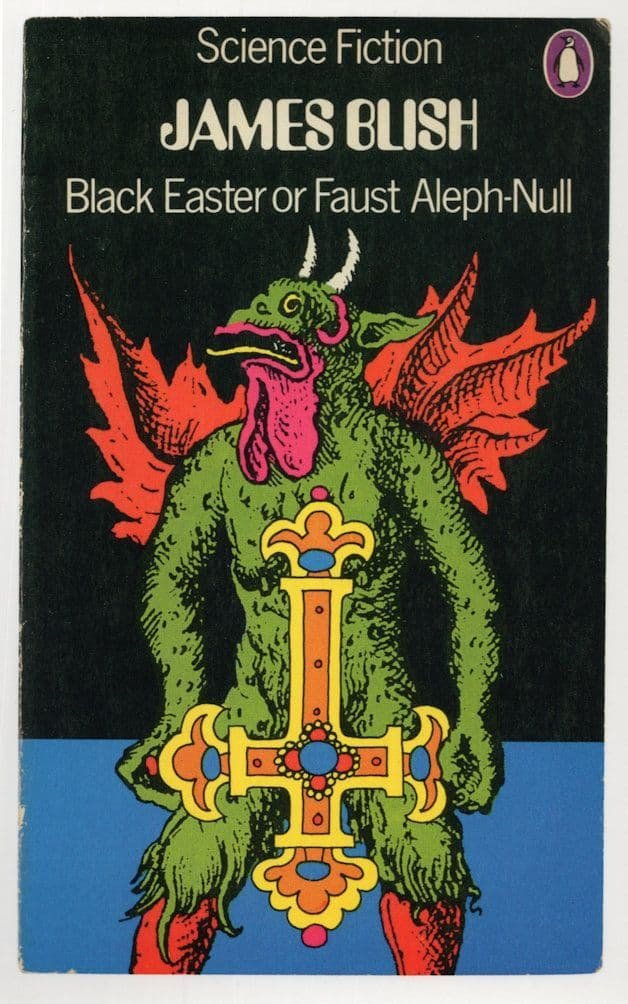Black Easter & The Day After Judgement by James Blish (1968)
Cover Art by Wayne Barlowe
Part of Blish’s After Such Knowledge series which includes A Case of Conscience and Dr. Mirabilis, Black Easter and The Day After Judgement do black magic and demon summoning literary justice! Isn’t that what we want!? An arms dealer for the Consolidated Warfare Service (CWS) seeks out a black magician to summon all the demons in Hell and release them into the world for one night…just to see what would happen. You know, simple bucket list type stuff.
The black magician, Theron Ware, agrees to the task and proves his abilities worthy by orchestrating two murders for the arms dealer, Dr. Baines, via help from summoned demons. First the governor of California must be murdered and then a prominent physicist who is encroaching on technology that could threaten Baines’ enterprise. Afterwards, Ware agrees to let Baines and two of his employees witness the big ritual, one partner becoming increasingly obsessed with learning the craft after Ware delivers a succubus to him.
From the beginning there’s a great juxtaposition with the inclusion of an Italian monk, Father Domenico, a white magician. He and a monastic order have a ‘Covenant’ with Theron Ware, a holistic gentleman’s agreement to be witnesses to the rituals as long as they don’t intervene. He’s there as a kind of failsafe in case things go horribly wrong and the cast of heaven needs to called upon for help. Rather than the entire host of Hell, Ware agrees to summon 48 demons total, with the pact clearly stating that all demons return from whence they came by sunrise. They don’t.
“I conjure and command thee, LUCIFUGE ROFOCALE, by all the names wherewith thou mayest be constrained and bound…where art thou? Thou who imposeth hatred and propagateth enmities, I conjure thee by him who hath created thee for this ministry, to fulfill my work!”
The brilliance of these books, other than the entire premise, lies within the detailed summoning rituals and Blish’s on point scholarly research of demons. The characteristics are taken straight from the Ars Goetia and Blish covers a lot of them, as well as the multitude of aliases they answer to. You feel as if you’re in Ware’s laboratory inhaling the putrid smoke from hell as the demons are called forth.
The Day After Judgement focus’ on the aftermath of the summoning, the world is now in chaos, thrown into World War III and mostly destroyed. One demon has even managed to become the new pope (in human form that is.) A few high ranking military personnel are holed up in an underground bunker outside of Denver trying to make contact with the rest of the world and ultimately they are charged with the task of confronting the demon hordes. The hosts of Hell have now erected the City of Dis, taken straight rom Dante’s Inferno. Where would demons choose to establish home base on earth you ask? Why, Death Valley of course! Not even atomic weaponry seems to phase the demons and the failed attempts to destroy their city are described in gory detail. The original witness’, Ware, Baines, his assistant and Father Domenico are spared and summoned to the city.
For anyone interested in the occult, Black Easter references grimoires, historical figures/authors and valuable left had path Easter eggs to track down and explore on your own.
“Throughout his journey Father Domenico had found nothing but terror and misery , a haunted populace which could not but conclude that everything the church had taught them for nearly 2000 years had been lies.”




